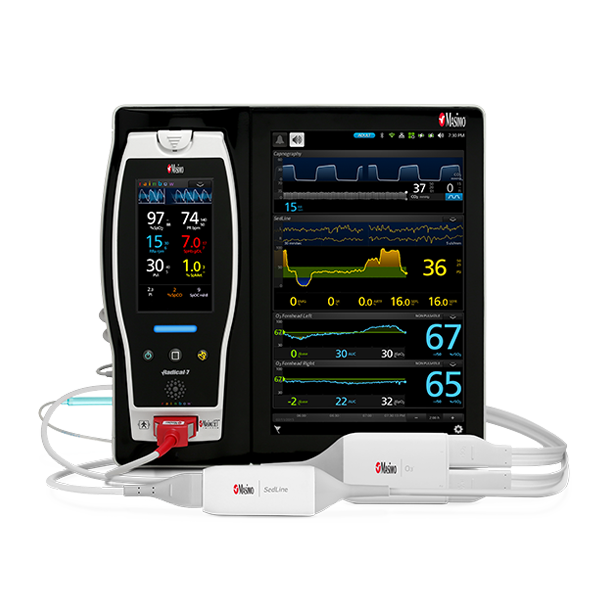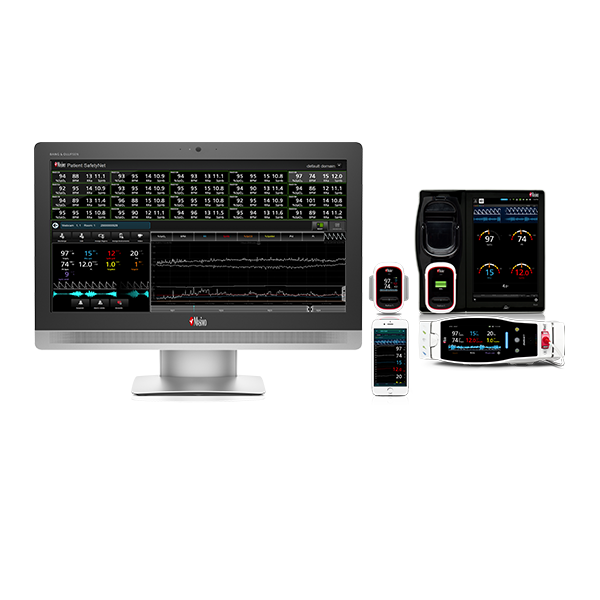Home / Patient SafetyNet
Patient SafetyNet

Masimo Patient SafetyNet™*
Supplemental Remote Monitoring and Clinician Notification System
Patient SafetyNet is a supplemental remote monitoring and clinician notification system which displays near real-time information from any connected Masimo or third-party device at a central station and allows alarms and alerts from bedside devices to be sent directly to clinicians.
Continuous Supplemental Remote Monitoring
Continuous Supplemental Remote Monitoring
Bedside Device Connectivity
According to the Anesthesia Patient Safety Foundation (APSF), post operative patients should have oxygenation monitored by continuous pulse oximetry.1 Using industry-leading Masimo SET® pulse oximetry and upgradeable Pulse CO-Oximetry measurements, Masimo bedside devices provide noninvasive and continuous monitoring of oxygen saturation, pulse rate, respiration rate, total hemoglobin, and other clinically valuable measurements.
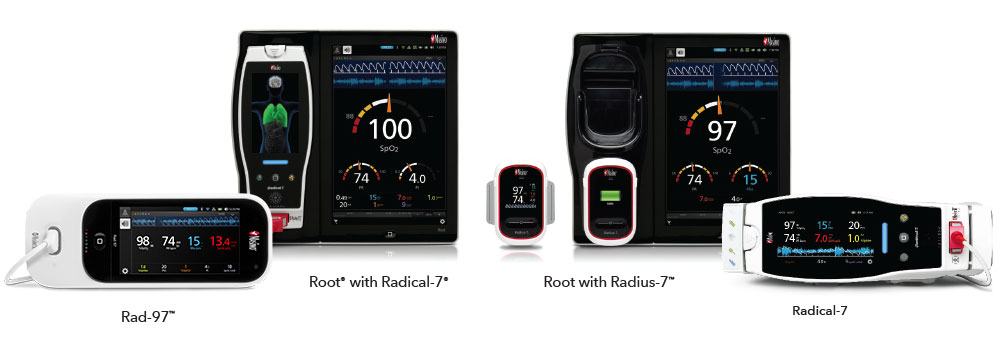
Customizable Central View Station
Patient SafetyNet allows clinicians to monitor up to 200 patients from a central view station. The configurable display allows clinicians to view the status of up to 40 patients at a glance, as well as investigate alarms and dive deeper into trend data.
Real-time Clinician Notification
Real-time Clinician Notification
Patient SafetyNet sends actionable patient alarms directly to available clinicians, with automatic escalation, helping facilitate quick patient assistance

Configure alarm thresholds and delays by patient population to manage alarms
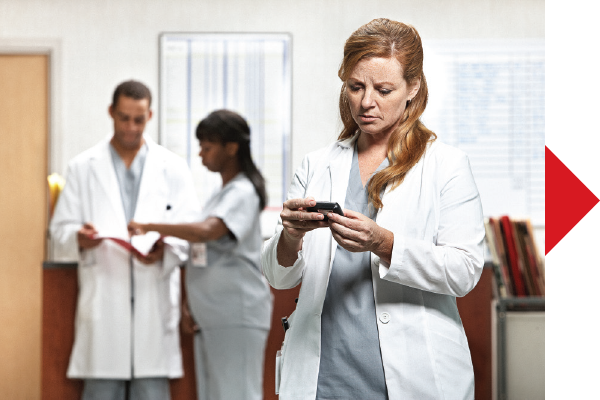
Clinician is notified remotely of alarm at the bedside

If primary clinician does not respond, the alert is escalated to additional clinicians
Simplifying Workflows with ADT and EMR Integration
Simplifying Workflows with ADT and EMR Integration
Patient SafetyNet and Root interface with hospital HL7 Admit Discharge Transfer (ADT) systems, allowing clinicians to associate patients with their data at the bedside through a drop-down list or barcode scanning.
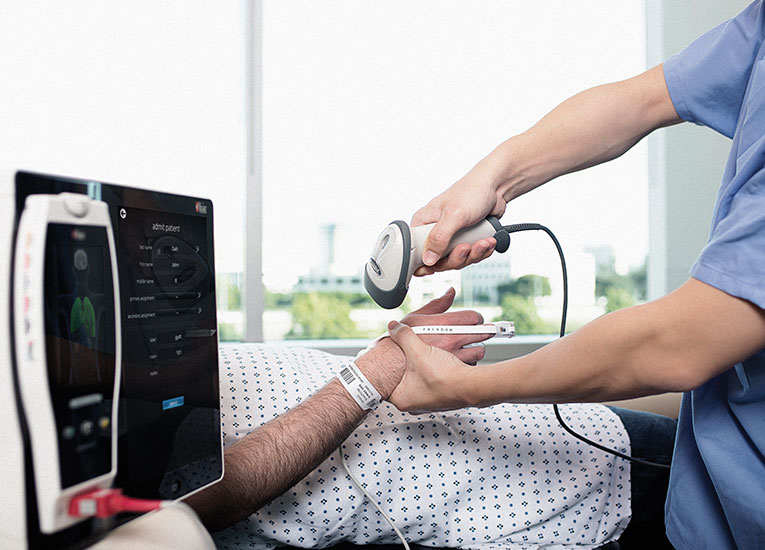
Automatic data transfer from medical devices to the electronic medical record (EMR) may improve productivity and reduce the likelihood of transcription errors.2 Patient SafetyNet provides clinicians with a solution to automate the transmission and subsequent recording of key data from connected Masimo and third-party devices to the EMR, helping clinicians spend less time recording information and more time caring for patients.
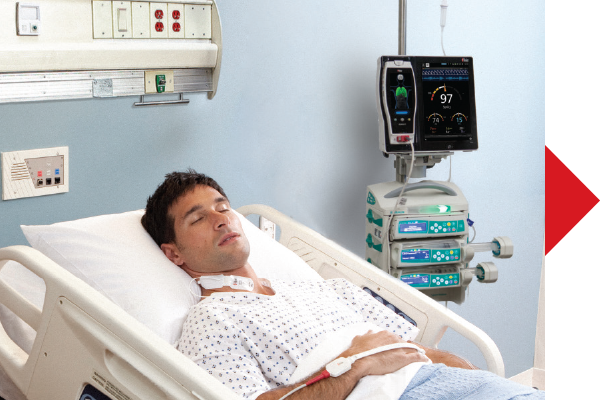
Root + Third-party Standalone Devices
Root’s built-in Iris™ ports act as a connectivity hub for third-party standalone devices
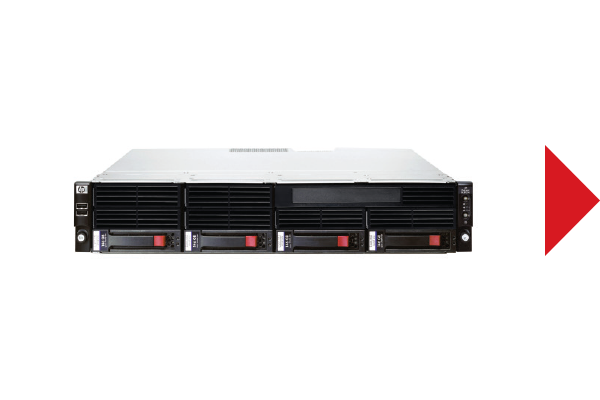
Patient SafetyNet
Patient SafetyNet converts all Masimo and third-party standalone device data into HL7
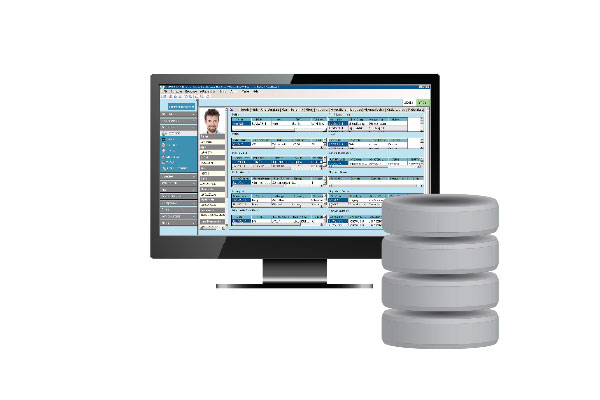
EMR
Patient SafetyNet automates data transfer from multiple devices to the EMR
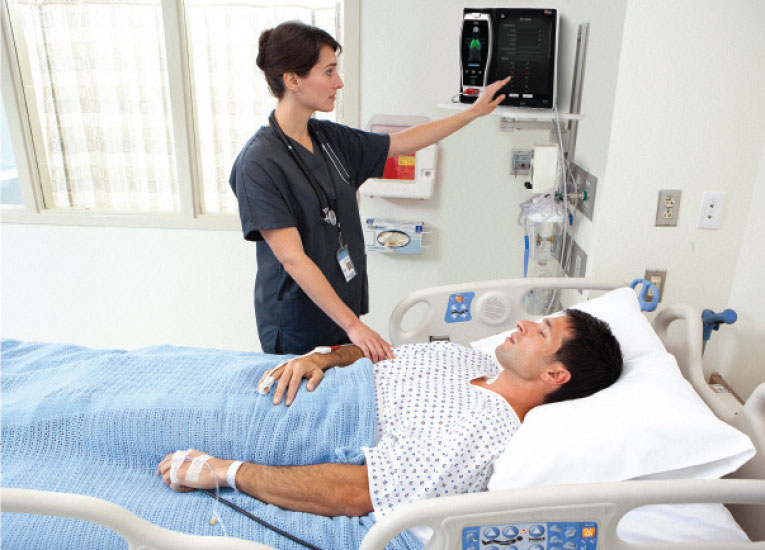
To simplify documentation during rounds, clinicians can take vital signs measurements on Root with integrated noninvasive blood pressure and temperature and manually enter additional patient data, such as level of consciousness, pain scale, and urine output, then verify and push the data directly from Root to Patient SafetyNet and the EMR.
Improving Outcomes on the General Ward with Patient SafetyNet
Improving Outcomes on the General Ward with Patient SafetyNet
In a landmark study published in Anesthesiology in 2010, researchers found that continuously monitoring adult patients on a post-surgical floor at Dartmouth-Hitchcock Medical Center using Patient SafetyNet with Masimo bedside devices resulted in a 65% reduction of rapid response team activations and a 48% reduction in transfers back to the ICU.3 Following the initial implementation and positive results in one post-surgical ward, Patient SafetyNet with Masimo bedside devices was expanded to cover more than 200 inpatient beds in all medical and surgical units.
In subsequent articles published in the Anesthesia Patient Safety Foundation Newsletter in 2012 and The Joint Commission Journal on Quality and Patient Safety in 2016, researchers reported that Patient SafetyNet enabled the facility, over a five-year period, to achieve their goal of zero preventable deaths or brain damage due to opioids,4 and over a ten-year period, maintain a 50% reduction in unplanned transfers and 60% reduction in rescue events, despite increases in patient acuity and occupancy.5

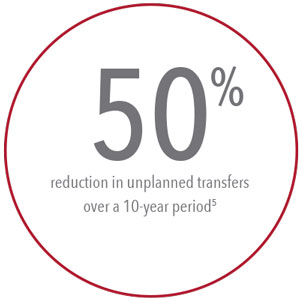

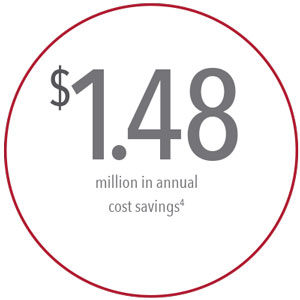
As a result of the Patient SafetyNet implementation, Dartmouth-Hitchcock Medical Center saved $1.48 million annually,4 showing that implementing Masimo SET® and Patient SafetyNet to more safely monitor post-surgical patients can also have a significant impact on a hospital’s bottom line by increasing ICU bed availability and reducing the costs associated with emergency rescue events.
The Value of Patient SafetyNet
Continuous Patient Surveillance Monitoring
Nancy Karon, BSN, RN, ONC at Dartmouth-Hitchcock Medical Center in New Hampshire discusses how Patient SafetyNet helps save lives at one of the nation's leading hospitals, as part of their 2011 Nursing Annual Report (published May 2012).
Additional Patient SafetyNet Solutions
Explore additional solutions for Masimo Patient SafetyNet.
References:
- 1.
Weinger MB, et al. APSF Newsletter. 2011;26(2):21-40.
- 2.
The Value of Medical Device Interoperability. West Health Institute. 2013.
- 3.
Taenzer AH et al. Anesthesiology. 2010;112(2):282-287.
- 4.
Taenzer AH et al. Anesthesia Patient Safety Foundation Newsletter. Spring-Summer 2012.
- 5.
McGrath SP et al. The Joint Commission Journal on Quality and Patient Safety. 2016 Jul;42(7):293-302.
*The use of the trademark PATIENT SAFETYNET is under license from University HealthSystem Consortium.
Resources
Caution: Federal (USA) law restricts this device to sale by or on the order of a physician. See instructions for use for full prescribing information, including indications, contraindications, warnings, and precautions.
PLCO-002431/PLM-11210C-1218

